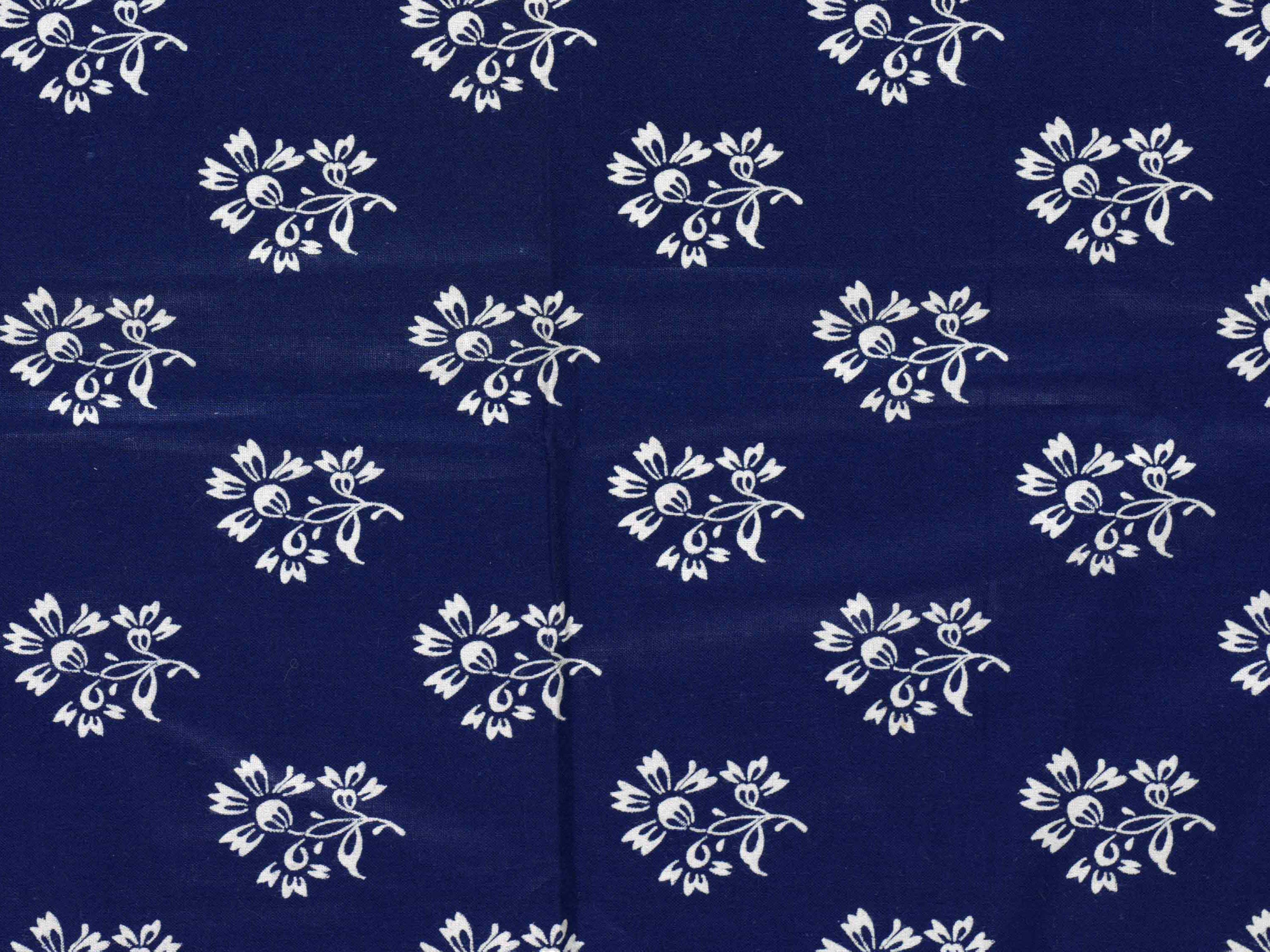Who doesn’t know it? It’s a traditional decoration of folk costumes, tablecloth, blankets, scarves, or pillows. Traditional blue-dyeing is one of the greatest treasures of the Moravian culture. Even the Ministry of Culture of the Czech Republic is aware of its great cultural and historical value that exceeds the borders of our country.
Jiří Danzinger, Sr., from Olešnice and František Joch from Strážnice are the craftsmen of the last two active blue-dyeing workshops. They were appreciated by the Holder of the Tradition and Folk Crafts award. In 2014, resist block printing and indigo dyeing was registered in the List of Intangible Elements of Traditional Folk Culture of the Czech Republic. Moreover, the Culture Minister has requested the Blueprint Manufacturing Technology to be added to UNESCO Lists of Intangible Cultural Heritage.
Machines have taken over the manual work
Traditional blue-dyeing is one of the oldest techniques of printing linen and cotton cloth. Its first mention was documented in China 4,000 years ago. The blueprint production in Moravia dates back to the 16th century.
Fabric was dyed in natural indigo colour which was later replaced by synthetic one. Originally, the whole process was made by hand and the patterns were printed on a canvas with water resistant dye and then the canvas was dyed in indigo colour. After that, the canvas was rewashed properly to remove water resistant dye and colour residue. This technology has been used unchanged till these days.

At the end of the 18th century, the blue-dyeing became popular in production of folk costumes. It gained a huge popularity mainly during the 19th century. Customers used to bring their linen to be dyed but later the factory’s linen canvases were used. For areas such as Horácko and Moravian Wallachia, linen was a typical material to work with. Blue-dyeing workshop used to be in every town at that time but printing machines in factories caused a gradual closing of blueprint workshops during the 20th century.
Traditions are passed on from generation to generation
Only two workshops have remained active until now, the Danzinger’s workshop in Olešnice and the workshop of the Joch family in Strážnice. They continue to print ornaments by firm forms which are passed on from generation to generation. Near the town of Olešnice na Blanensku, there was a great cultivation of flax in the past. So linen was woven almost in every home and if there was a canvas, there had to be painters too. The history of the Olešnice’s workshop dates back to 1816 but the secret of colouring is much older. It was originated in the 16th century. The blueprint technology is maintained by the tenth generation of the Danzinger family. This technology hasn’t changed since 1849.
The workshop in Strážnice was founded in 1906 by Mr. Cyril Joch. His son František continued in his blue-dyeing craft until 1951 when the totalitarian regime banned private business. After 1954, in connection with the foundation of the Centre for Folk Art Manufacture which supported the traditional folk producers since the end of World War II, they managed to reopen the blue-dyeing workshop. The workshop in Strážnice still works with original local patterns but also with unique patterns designed by artist of Centre for Folk Art Manufacture.
From tablecloths and aprons to the contemporary fashion
Both workshops offer a wide range of blue-dyeing products such as fabrics, tablecloths, potholders, aprons, bags, pillows and even less traditional accessories (jewelery, laptop pads…). Their main goal is to engage contemporary fashion designers to the art of the blue-dyeing technique.
For example, a unique Dress of Fulfilled Wishes for the Czech Miss World 2016 Natálie Kotková was made in the workshop in Olešnice. Designer Marie Stará used the blue-dyeing technique on the dress that carries pictures of children’s wishes from the Department of Oncology in the Motol University Hospital in Prague.
In Strážnice, they cooperate with many renowned and upcoming fashion designers such as Klára Nademlýnská, who has a ten-year experience of owning her luxury store in Paris with ready-made clothes. Another fashion designer Veronika Vimperová who graduated from Higher Professional School Brno finished her studies in Spain and now she works in English company specialized in movie costumes.
Get more info about the blue-dyeing technique:
www.modrotisk-danzinger.cz and www.straznicky-modrotisk.cz
Martina Dvořáková / Made By Ordinary → Martina Dvořáková graduated from many educational institutions specialized in fashion and clothing design and began to create her own design pieces. Among all the materials, the blueprint technique has a significant place in her work. She established the brand Made By Ordinary in 2016 and she is true to a ‘slow fashion’ trend. Emphasizing the quality and timelessness of the clothing, handmade work and original materials and seeking beauty in ordinary things. She works with canvas which was traditionally used as a regular material for ordinary folk costume aprons and is dyed only in indigo colour. Also, she uses the blue-dyeing technique with handmade minimalist pattern and she is often inspired by traditional ones. Last year, she won the Dolce Vita Award for Best Product in the Fashion category at the international design festival called designSUPERMARKET in Prague. She is successful abroad too.

Find more info on her FB page Made By Ordinary



